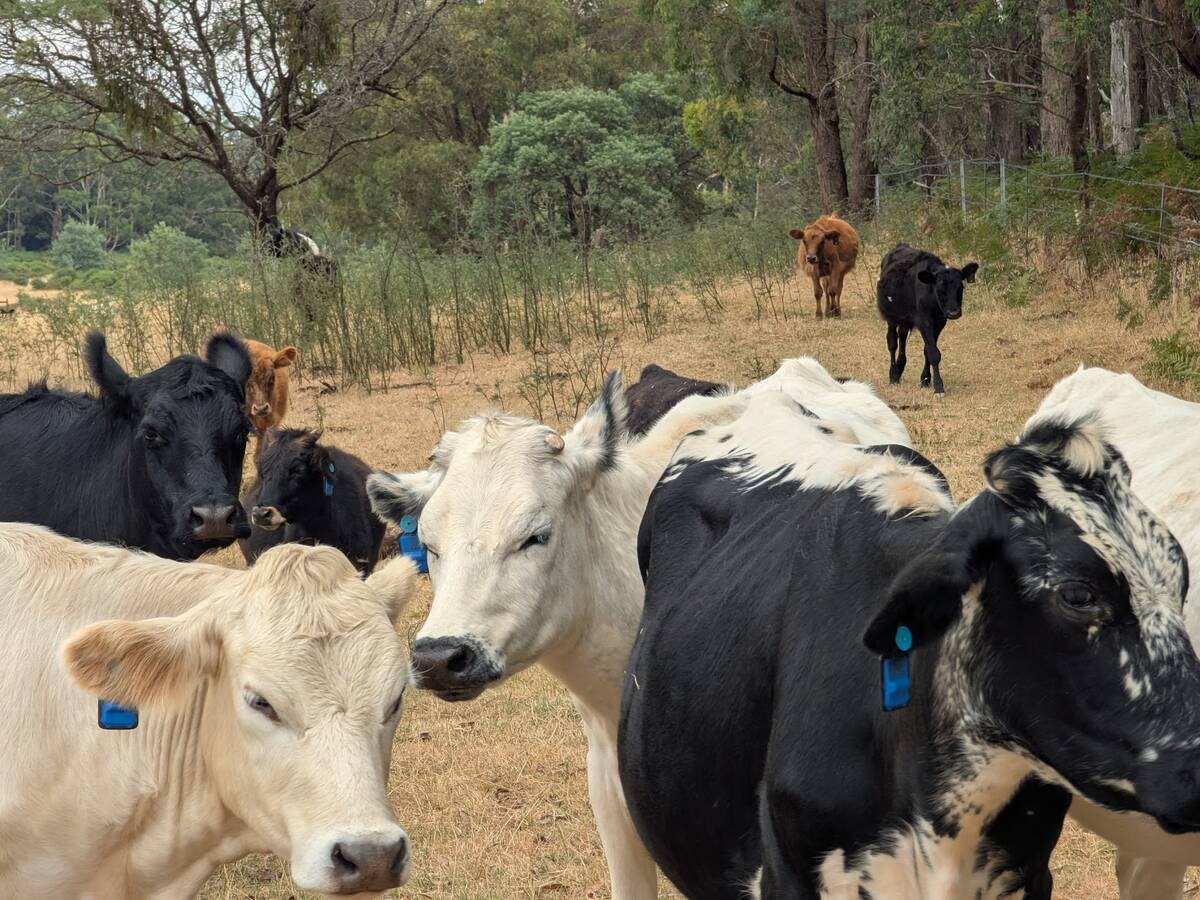A spike in complaints about its product’s ineffectiveness against itchy cattle drove Solvet, a Canadian veterinary pharmaceutical firm, to investigate the potential causes and to look for relief.
“This has become a bigger problem than it used to be,” says Dr. Denis Nagel, a consulting veterinarian with the company, as well as with Alberta Veterinary Laboratories (AVL). Nagel made a presentation on Beef Day during the Grey-Bruce Farmers Week in January 2022.
In January 2017, the company received hundreds of complaints from western Canadian producers about how Solmectin, an ivermectin-based pour-on remedy for itching cattle, was not working. The previous year, they had received only about five complaints.
Read Also

Australian company brings ear-tag tech to Canadian pastures
With Smart Paddock, beef farmers and ranchers can track their cattle through GPS technology
He says that the itching problem usually occurs between January and April and it’s sporadic. Some years, there’s a big outbreak and other years, nearly nothing. Over the winters of 2017 and 2018, when they went out to investigate the complaints, they discovered that although the scratching cattle were losing hair, causing sores and sometimes bleeding, a lot of them didn’t have lice.
“When it’s cold in the Alberta winter, and you have bald cows, it’s really hard for a producer to watch,” he says.
Lice infestations
“The automatic assumption for producers is that if you have an itchy cow, it’s lice, but that’s not always the case,” he says. In their research, investigators found that 30 per cent of them had no lice, the ones that did have lice had only 20 per cent of the cattle affected, and even then, there were very low numbers of lice on individuals. An interesting side observation was that calves didn’t seem to be susceptible to the itchy/scratching problem.
Re-treatment, with either the ivermectin or permethrin compounds, didn’t seem to affect the scratching cattle.
Treating lice infestations can be tricky, and Dr. Nagel says that mixing treated with untreated cattle can cause reinfestations, as can introducing new untreated cattle to the herd, rain or snow that washes off the treatment, using the product improperly (putting it on one small site) and misdiagnoses (lice aren’t the problem).
He says that biting lice cause more itching than sucking lice. To control biting lice, an ivermectin pour-on treatment done properly is the most effective because it makes contact with the lice, which feed on hair debris and skin secretions.
Sucking lice are what were almost exclusively found during Solvet’s investigation. They are tiny (2.5 millimetres long), mostly found around the head, neck, shoulders and back of the animal and feed on its blood.
What the investigators found was mostly an application problem — putting the product on at the wrong time, or not enough, in rain or snow or not applied on the skin along the back line. He also says that only about 20 per cent of the herd will be affected if there is an infestation, and again that lice might not be the cause of the scratching.
Mange mites
Sarcoptic mange mites are very rare and require several skin scrapings by a veterinarian to diagnose. Chorioptic mange mites cause severe itching and are very hard to diagnose. These mites are becoming more prevalent in Canada and can live off the host in bedding, which makes them easily transmissible. They also must come in direct contact with the pesticide in order to be killed.
“A veterinary friend took a flea comb and combed the sides of 10 of his bulls, sent the samples to the lab and came back with chorioptic mange on seven of them,” Dr. Nagel says, adding that bulls seem to be more susceptible than cows.
Diagnosis and treatment of chorioptic mange is difficult because multiple samples need to be taken by a veterinarian, mostly in the hind area, legs, scrotum and udders. The entire animal has to be sprayed two to three times at three-to-four-week intervals. The bedding also must be changed between treatments.
There are some other possible sources and potential fixes for the mysterious itching that Solvent continues to research.
Straw mites
As their name suggests, straw mites live in straw or hay. They are very allergenic and move onto the human or animal to bite and then move back to the bedding. They seem to be a worse problem in wet years and are very hard to diagnose because a large straw sample is needed, and they’re tiny.
Vitamin and mineral deficiencies
A massive drought hit Western Canada in the summer of 2016, shorting the supply of feed and pastureland. A fire at a manufacturing plant also meant a limited supply of vitamin A.
Since 2017 was the year so many itching cattle were reported, 2018 was a better year for feed and 2019 returned to having very few complaints reported, Dr. Nagel suspects that there’s an underlying nutritional component to the problem.
“I did check for levels of vitamin A and E and they (the cattle) were deficient in both,” he says, adding that the itching problem normally goes away once the cattle are on new grass in May.
Premature seasonal shedding
A warm February can cause cattle to start itching and lose their winter coats early. Among the causes are genetics (shedding is heritable), poor nutrition and dry, scurfy skin. Dr. Nagel says that all the itchy cattle they examined had very dry coats and scurf that was millimetres deep.
Using mineral oil in oilers can help in these cases. Once the winter fur is shed, this problem usually goes away.
Environmental hypersensitivities
Almost nothing is known about allergies in cattle, Dr. Nagel says, unlike dogs and horses. Allergens can come from feed, bedding, plants (pollen, seeds hulls), parasites (straw mites) and fungus (from old feed or bedding). Among the ways to prevent this kind of itching are avoiding old feed and bedding, keeping the dust down and using light mineral oil to soothe the skin.
Cattle can also become itchy from other environmental factors such as dry cold air which dries out the skin, frostbite which causes itching when it starts to heal, and sunburns which can even happen in winter with intense sunlight. Using a light mineral oiler or adding zinc propionate or zinc oxide to the oiler can help with this problem.
Future plans
Solvet has plans to continue investigating the itchy cattle problem, although Dr. Nagel didn’t anticipate a big issue in the January to April period of 2022. Among the many areas they will be researching is also the possibility that the lice are becoming resistant to ivermectin.
“We know there’s a lot more to it than just lice,” he says. “We at Solvet and AVL intend on finding out exactly what they are.”
He says, in the meantime, his advice to producers is to listen to their veterinarians, who will be kept informed of advances in the research.
















